巻号一覧

日本平滑筋学会総会総説集
日本平滑筋学会総会総説集
28 巻, 1 号
選択された号の論文の3件中1~3を表示しています
- |<
- <
- 1
- >
- >|
-
須田 真, 高比良 英輔, 尾上 久一郎, 田村 謙二1992 年28 巻1 号 p. 1-13
発行日: 1992年
公開日: 2010/07/21
ジャーナル フリーThe rhythmic contractions of urinary bladder under constant volume condition were evoked in decerebrate and de-anesthetized dogs, while various myogenic and nerve-mediated electrical and mechanical activities of smooth muscles were recorded from in vivo pelvic viscera. The vesical rhythmic contractions were transiently and partially blocked by intraveous application of tiropromide. This ‘partial’ block showed a good contrast to the ‘complete’ block of identical contractions, which was observed after application of oxybutynin, known as a potent anti-muscarinic drug.
The bladder voiding cycles were observed in other decerebrate dogs, while the warmed Ringer solution was infused at a steady rate into the dome of the bladder until principal voiding contraction occurred in cystometric recordings. The initiation of voiding contraction was markedly delayed afrer intravenous injection of tiropramide. The delay of principal contraction was found to be due to successive appearance of falling waves in cystometric recordings. As a evident contrast, terodiline caused a significant reduction of voiding contraction height and shortening of clonic discharge phase of external urethral sphincters during voiding cycle.
It is concluded that tiropramide does not reveal anti-muscarinic action which oxybutynin or terodiline does really show, instead tiropramide acts principally on bladder detrusor itself, especially on its relaxation phase of premature contraction to be prolonged. The evidences were also presented for electrophysiological identification of bladder detrusor and urethral smooth muscle.抄録全体を表示PDF形式でダウンロード (1579K) -
勝浦 康光1992 年28 巻1 号 p. 15-24
発行日: 1992年
公開日: 2010/07/21
ジャーナル フリーThe following findings have been obtained as a result of making an assessment regarding the diurnal changes in colonic motility by means of continuous measurement of contractile waves by using strain gauge force transducers and roentgenographic observation in conscious dogs.
1. Before defecation, the contractile force of the wave was weak, frequency of its emergence was also small, and transfer of intestinal content was slow, showing decrease of colonic motility.
2. After defecation, the gradually increasing and decreasing contractile wave groups became clear, and the contractile force was intensified concurrently with increase of its emerging frequency. Transfer of intestinal content to the anal side was rapid, and recovery of colonic motility was observed.
3. The recovery of the colonic motility after defecation was observed regardless of digestive or interdigestive state.
4. By intake of food, increase of the colonic motility corresponding to gastrocolic response was observed, but it was due to the increase of emerging frequency of contractile wave, for which no change was observed in contractile force or duration in each individual waves. 5. It was suggested that the contractile motion which undergoes gradual increase and decrease is the basic pattern in the colonic motility and that the colonic motility changes by the differences of amout, shape and hardness of intestinal content, and decreases gradually along with increase of intestinal content, but the basic pattern of contractile motion is restored by inflow of intestinal content into the colon which became empty after defecation.
From the above it was considered to be inadequate to use the pattern classification of digestive and interdigestive state for the analysis of colonic motility and that assessments should be made centering on defecation.抄録全体を表示PDF形式でダウンロード (4865K) -
Tsutomu MICHIBAYASHI1992 年28 巻1 号 p. 25-33
発行日: 1992年
公開日: 2010/07/21
ジャーナル フリーIt remains not entirely accepted that changes in prostanoid metabolism in the blood vessel wall, as well as in whole blood, have a certain influence on vascular responsiveness to vasoactive agents. The aim of the present study is to elucidate whether platelet-derived thromboxane A2 (TxA2) participates in enhancement of vasoconstractile response to a pressor agent. Platelet aggregation was extraluminally induced by application of collagen to autologous platelet rich plasma (PRP), and then the PRP treated with collagen was infused into the perfusion system by means of a small infusion pump.All the prostanoids in the perfusate were assayed radioimmunologically. Infusion into the perfusion system of PRP treated with collagen, as well as that of untreated PRP, apparently caused pronounced enhancement of vasocontractile response to noradrenaline (NA), accompanied by elevations of both the level of TxB2, a stable metabolite of TxA2, and the TxB2/prostaglandin E (PGE) ratio. In addition, treatment with either OKY-046 (a Tx A2 synthetase inhibitor) or ketanserin (a selective S2-serotonergic antagonist) resulted in diminution of the raised vasoconstrictor response to NA induced by application of collagen to PRP.
Thus, it is possible to draw the conclusion that platelet-derived TxA2 is as potent a vasoactive substance as 5-hydroxytryptamine (5-HT) and at least in part, contributes to the enhancement of vasocontractile response to NA (NA-R) during raised platelet aggregability.抄録全体を表示PDF形式でダウンロード (932K)
- |<
- <
- 1
- >
- >|